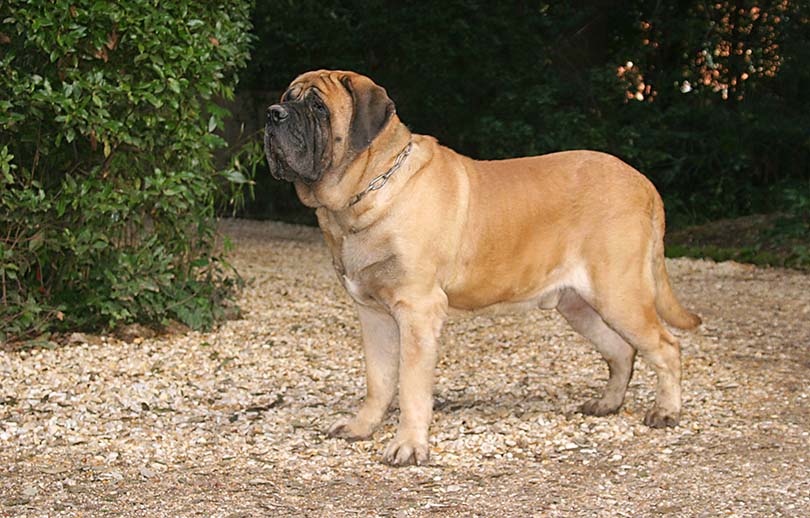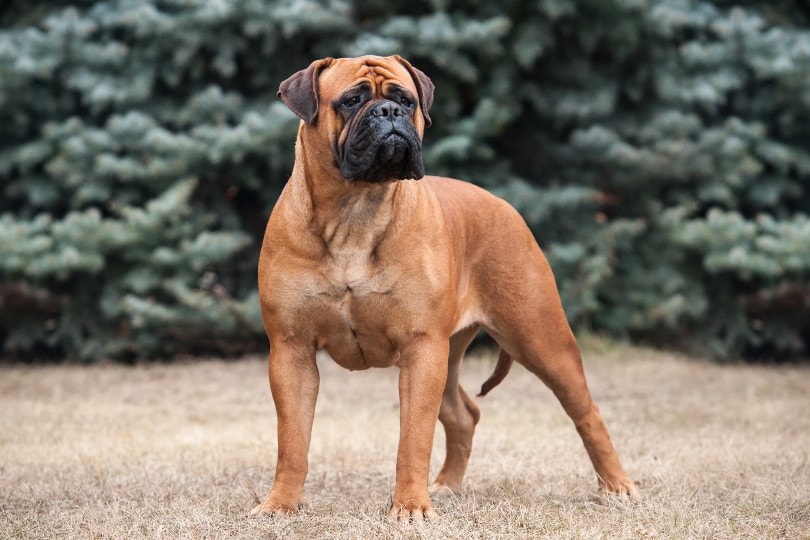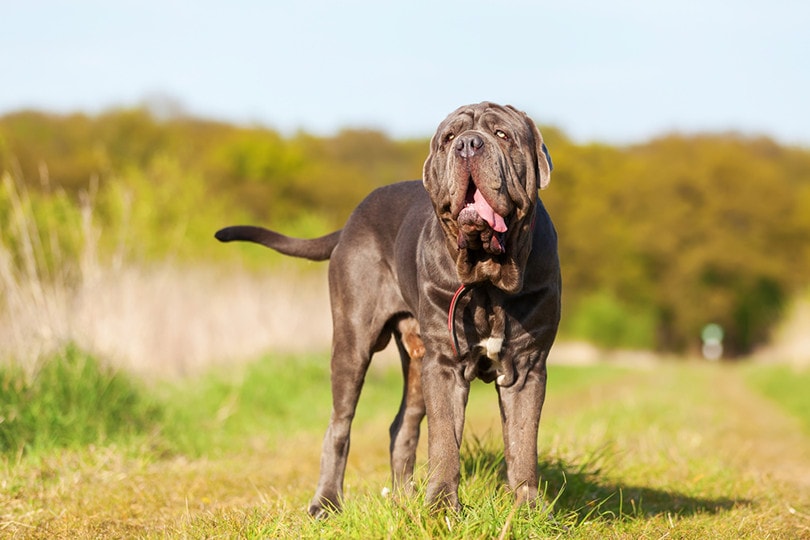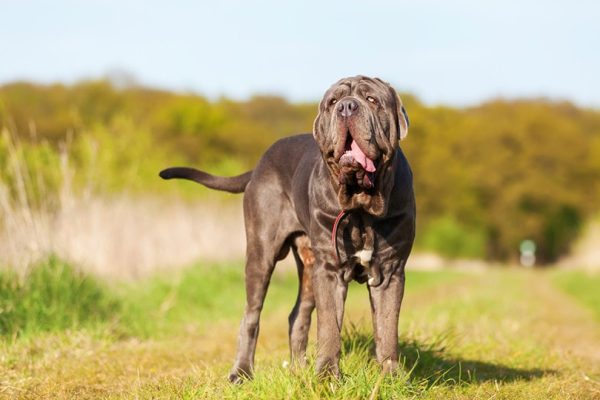The Mastiff is an ancient breed, whose origins date back to the time of Julius Caesar. You will not be surprised to learn that they have been used during wars as attack and fighting dogs due to their impressive size. The Romans also used them in the Colosseum, where these powerful dogs had to fight bears and lions. Roman troops then introduced the Mastiff to England, where it was long presented as a circus beast, like a ferocious and bloodthirsty dog. Fortunately, those cruel times are long gone. Today, the Mastiff is nothing less than a wonderful pet.

Mastiffs Before the Common Era
The Mastiff would be a descendant of the Molossers that appeared in Central Asia several thousand years ago. They spread throughout Eurasia, so much so that we can find references to these dogs in ancient Greece as well as in ancient Babylon. No one exactly knows how they arrived in the British Isles, but one theory is that they traveled with Phoenician traders around 1500 BC.
What is certain is that Molossers were already living in the United Kingdom during the Roman invasion. Indeed, Julius Caesar himself (100 BC–44 BC) was so impressed by these incredible dogs (which exceeded in size and weight the Molossers of the Roman army) that he brought many back to Rome to fight in the arena against lions and gladiators.
Mastiffs in the Middle Ages

The British are said to have contributed significantly to the selection of Mastiff dogs. They also popularized their use as watchdogs, although they served for a long time as fighting dogs for the entertainment of English gentlemen.
Thus, Mastiffs were used for centuries to protect farms and villages and also as fighting dogs. They accompanied armies but were also used for entertainment. Lions being relatively rare in Britain, it was against bears that they had to fight. However, the latter disappeared from the country at the beginning of the Middle Ages, and it was then dog fights that were organized until this odious sport was banned in 1835.
From the Middle Ages to the 19th Century
The word Mastiff appeared during the 14th century in England and derives from the old French “mastin”, which today has become “mâtin”. The origin of the name comes from the Latin “mansuetus”, meaning “to tame”.
The modern history of the breed begins shortly after, more precisely in 1415, during the battle of Agincourt, in northern France. Sir Peers Legh, injured in the fighting, was protected on the battlefield for hours by his beloved Mastiff, waiting for help to arrive. Following this resounding feat, his dog was sent to one of the first kennels, the Lyme Hall Kennel, where the breed as we know it today was developed.
However, the evolution of the armament, then the progressive prohibition of dog fights, strongly reduced the popularity of the Mastiffs in the 18th and 19th centuries. The Mastiff, however, continued to be a formidable watchdog and survived this disaffection. During this period, the aggressive traits, hitherto sought after in these fighting dogs, were gradually eliminated to retain only the friendliest individuals.
The Near Extinction of the Mastiffs During the Two World Wars

The first half of the 20th century was nearly fatal to the mighty Mastiff. First, although it was recognized in 1885 by the very young American Kennel Club (AKC), it did not succeed in establishing itself in the United States. Thus, the breed was considered non-existent outside the United Kingdom at the end of World War I.
Its salvation came from Canada in 1918 when a puppy named Beowulf was born. This one was the offspring of a pair of Mastiffs imported from Great Britain. Thus, its descendants, along with those of a few other individuals imported in the 1920s and 1930s, saved the breed from extinction a few years later.
However, World War II had (once again!) dramatic consequences for the UK Mastiff population. Bombings, the war effort, restrictions, and famines led to the virtual extinction of the breed. Only one female Mastiff, Nydia de Frithend, survived. After hostilities ended, breed enthusiasts imported 14 specimens from the United States and re-launched a successful breeding program.
The Rise of the Mastiff
In 1964, the Fédération Cynologique Internationale (FCI) officially recognized the Mastiff, thus confirming the breed’s revival. In fact, it is now accepted by all the major national canine organizations, including the American United Kennel Club (UKC), the Canadian Kennel Club (CKC), and, of course, the British Kennel Club (KC).
Today, the Mastiff is one of the most common giant dog breeds in the world. In 2022, this giant dog was ranked 37th (out of nearly 200) in the AKC’s ranking of breeds by popularity based on the number of annual registrations with the body. This represents an increase of about 10 places compared to the beginning of the 2000s.
The Bottom Line
We hope this article has helped you learn more about the fascinating history of this magnificent beast. But, despite its fierce fighter origins, the Mastiff definitely has a place in our homes as a loving, loyal, and protective four-legged friend!
See Also:
- 9 Common Health Problems in Mastiffs – Diseases to Be Aware Of!
- English Mastiff Price: How Much Do They Cost? Price Guide
Featured Image Credit: Christian Mueller, Shutterstock










